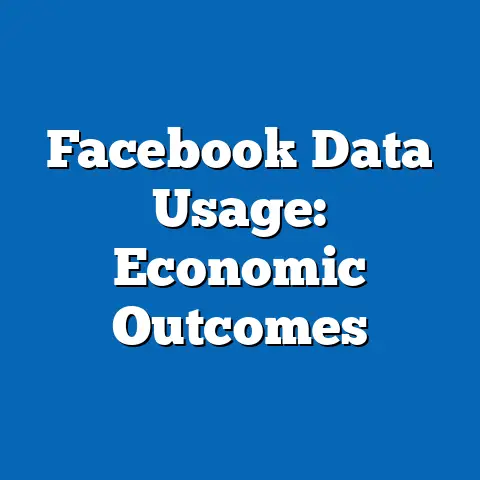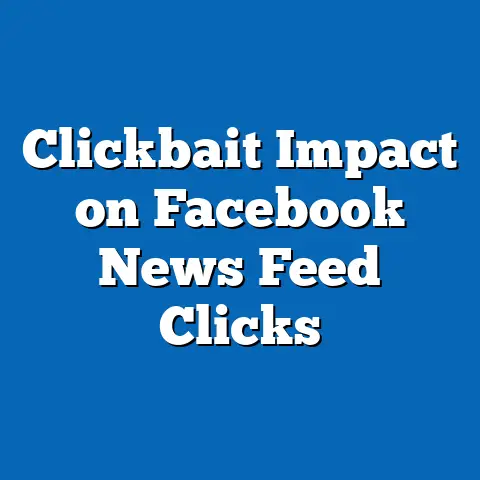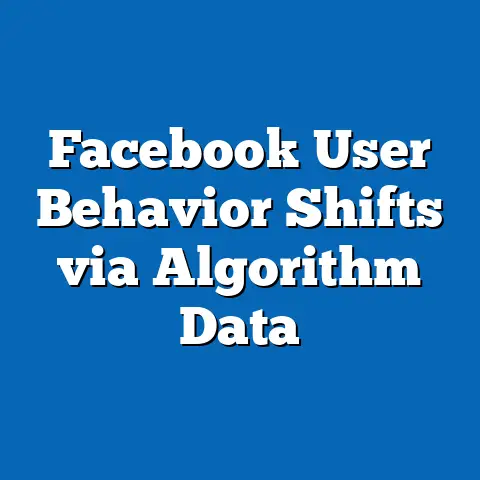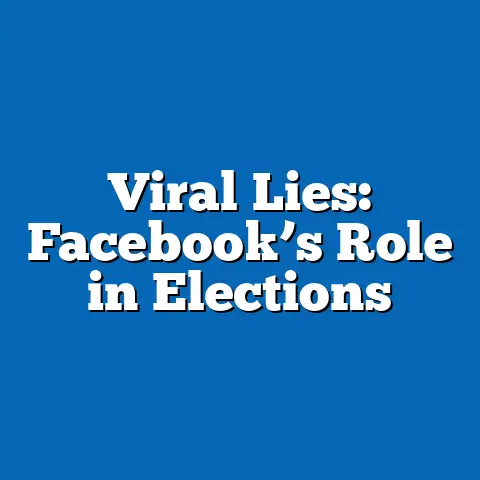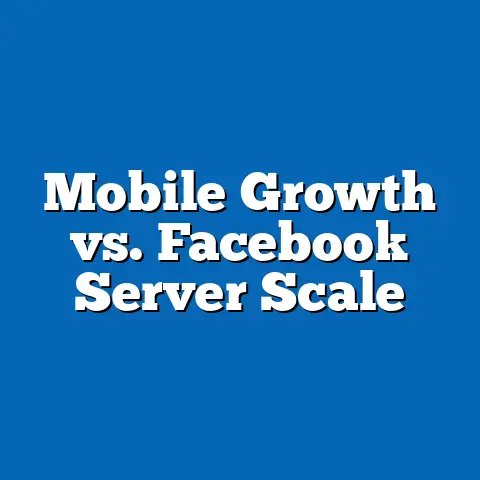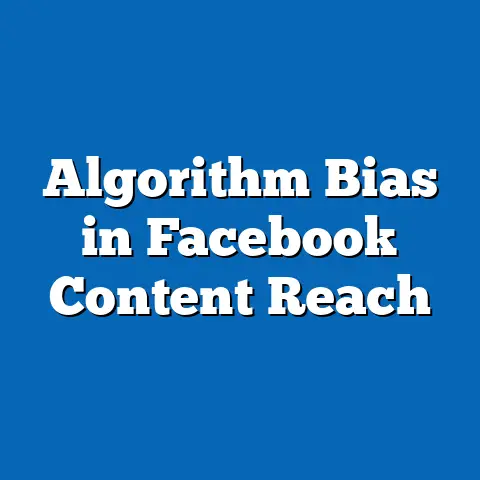Utah Teens and Facebook: Usage Shifts
The concept of generational blending styles refers to the ways in which different age cohorts interact with, adopt, and adapt to cultural, technological, and social trends, often creating unique intersections of behavior and identity. These blending styles are shaped by historical events, economic conditions, and technological advancements, resulting in distinct patterns of engagement with platforms like social media. In the context of Utah teens, understanding these blending styles provides a lens through which to analyze their evolving relationship with platforms like Facebook, once a dominant force in digital communication but now facing shifting relevance among younger demographics.
Generational blending is not a static phenomenon; it evolves as new technologies emerge and societal norms shift. For teens today, often classified as part of Generation Z (born roughly between 1997 and 2012), blending styles reflect a mix of digital nativism, economic pragmatism, and cultural adaptability. This article will explore how Utah teens’ usage of Facebook has shifted over time, situating their behavior within broader generational blending styles, historical contexts, and societal implications, while delving into the specific cultural and demographic factors at play in Utah.
Defining Generational Blending Styles: Characteristics and Framework
Generational blending styles describe the hybrid ways in which individuals from different age groups incorporate elements of other generations’ values, behaviors, and technologies into their own lives. For Generation Z, this often manifests as a blend of digital fluency inherited from Millennials (born 1981-1996) and a pragmatic, self-reliant approach shaped by economic uncertainty and global crises. Unlike Millennials, who came of age during the early internet boom and embraced platforms like Facebook as a primary social tool, Gen Z teens have grown up in a fragmented digital landscape with diverse platforms competing for their attention.
Key characteristics of Gen Z’s blending style include a preference for visual and ephemeral content (e.g., Instagram, Snapchat, TikTok), a heightened awareness of privacy and data security, and a tendency to prioritize authenticity over curated online personas. These traits contrast with earlier generations’ more open and permanent sharing habits on platforms like Facebook. Additionally, Gen Z often blends traditional values—such as financial caution or community focus—with hyper-modern digital behaviors, creating a unique cultural synthesis.
Historically, generational blending styles emerge from pivotal societal shifts. For instance, the Great Recession (2007-2009) instilled economic caution in both Millennials and early Gen Z, while the rapid proliferation of smartphones during the 2010s fundamentally altered how teens connect and communicate. These events have fostered a blending style in Gen Z that is both tech-savvy and skeptical of institutional trust, influencing their selective engagement with older platforms like Facebook.
Historical Context of Generational Blending and Social Media
To fully grasp Utah teens’ shifting usage of Facebook, it is essential to consider the historical context of social media adoption across generations. Facebook, launched in 2004, initially targeted college students before expanding to a broader demographic, becoming a cultural juggernaut by the late 2000s. For Millennials, it was a revolutionary tool for networking, self-expression, and community building, reflecting their blending style of optimism and connectivity during a time of relative economic stability pre-recession.
By the time Gen Z emerged as a distinct cohort in the 2010s, the digital landscape had transformed. The rise of Instagram (2010), Snapchat (2011), and later TikTok (2016) offered more dynamic, visually driven experiences that aligned with Gen Z’s preference for quick, authentic interactions. Meanwhile, Facebook became associated with older users—parents, grandparents, and institutions—leading to a perception among teens that it was less “cool” or relevant to their social lives.
Significant events, such as the 2018 Cambridge Analytica scandal, further shaped Gen Z’s blending style by heightening concerns over privacy and data misuse on platforms like Facebook. Unlike Millennials, who largely accepted data sharing as a trade-off for connectivity, Gen Z teens have grown up in an era of data breaches and digital surveillance, fostering a more cautious approach to platform engagement. This historical backdrop sets the stage for understanding why Utah teens, like their peers nationwide, have drifted away from Facebook in favor of newer platforms.
Societal Implications of Generational Blending Styles
The blending styles of Gen Z, particularly in relation to social media, carry significant societal implications. First, the shift away from platforms like Facebook signals a broader fragmentation of digital spaces, where different generations occupy distinct online ecosystems. This can exacerbate generational divides, as teens and older adults have fewer shared platforms for interaction, potentially limiting cross-generational dialogue and understanding.
Economically, the migration of younger users to newer platforms impacts the advertising and business models of companies like Meta (Facebook’s parent company). As Gen Z prioritizes platforms with influencer-driven content and short-form video, businesses must adapt to reach this demographic, reshaping digital marketing strategies. This shift also influences workplace dynamics, as younger employees bring their blending style of digital communication—favoring quick, informal interactions—into professional settings, often clashing with older generations’ more formal approaches.
Culturally, Gen Z’s blending style reflects a move toward individualism and authenticity, challenging the performative nature of earlier social media trends. This has implications for mental health, as teens navigate the pressures of online visibility while seeking genuine connections. In Utah, where cultural values often emphasize community and family ties, these blending styles intersect with local norms, creating a unique dynamic in how teens engage with platforms like Facebook, which we will explore in depth.
Utah Teens and Facebook: A Case Study in Usage Shifts
Demographic and Cultural Context of Utah Teens
Utah presents a unique case for studying generational blending styles and social media usage due to its distinct demographic and cultural profile. The state has a younger-than-average population, with a median age of 31.5 years compared to the national average of 38.5, according to the U.S. Census Bureau (2022). This youthfulness is partly driven by high birth rates and a strong presence of the Church of Jesus Christ of Latter-day Saints (LDS Church), which emphasizes family and community values.
For Utah teens, these cultural factors influence their blending style, often blending traditional values of faith and family with modern digital behaviors. While Gen Z nationwide may prioritize individualism, Utah teens often navigate social media with a heightened awareness of community expectations, which can shape platform choices. Facebook, with its focus on family connections and local groups, might retain some relevance here compared to other regions, even as usage declines.
Additionally, Utah’s tech industry growth, centered in areas like Silicon Slopes, exposes teens to cutting-edge digital trends, potentially accelerating their adoption of newer platforms. However, rural areas of the state may face digital divides, with limited access to high-speed internet impacting how teens engage online. These nuances provide a rich backdrop for examining shifts in Facebook usage among Utah teens.
Data on Usage Shifts: National Trends and Utah-Specific Insights
Nationally, research highlights a marked decline in Facebook usage among teens. According to a 2022 Pew Research Center survey, only 32% of U.S. teens aged 13-17 use Facebook, down from 71% in 2014-2015. In contrast, platforms like YouTube (95%), TikTok (67%), and Instagram (62%) dominate teen engagement, reflecting Gen Z’s preference for visual and interactive content.
While Utah-specific data is less comprehensive, localized studies and anecdotal evidence suggest similar trends. A 2021 report from the Utah Department of Health noted that teens in the state increasingly favor platforms like Snapchat and TikTok for peer interaction, while using Facebook primarily for family communication or accessing local community pages. This aligns with national patterns but underscores the role of cultural factors—such as strong family ties—in sustaining limited Facebook usage.
Quantitative data also reveals generational contrasts within Utah. A 2020 survey by Brigham Young University found that while 78% of Utah adults over 30 use Facebook regularly, only 28% of teens reported weekly usage. This gap illustrates how generational blending styles diverge, with teens adopting newer platforms while older generations remain anchored to Facebook.
Reasons for the Shift: Technological and Social Factors
Several factors drive Utah teens’ shift away from Facebook, mirroring national trends while reflecting local dynamics. Technologically, the platform’s design—focused on text-heavy posts and static content—feels outdated to a generation accustomed to short-form video and disappearing messages. Apps like TikTok and Snapchat offer more engaging user experiences, aligning with Gen Z’s blending style of immediacy and creativity.
Socially, Facebook’s association with older generations diminishes its appeal among teens seeking peer-driven spaces. In focus groups conducted by the University of Utah in 2022, many teens described Facebook as “a place for parents” or “where you see family updates,” highlighting a perception of the platform as less relevant to their social identity. This perception is compounded by privacy concerns, as teens express wariness about sharing personal content on a platform linked to data scandals.
In Utah, cultural factors add another layer. The emphasis on family and community means that some teens maintain minimal Facebook presence to stay connected with relatives or participate in church-related groups. However, this usage is often passive—lurking rather than posting—indicating a functional rather than social role for the platform in their lives.
Generational Comparisons: Utah Teens vs. Millennials and Gen X
Comparing Utah teens’ blending styles with those of Millennials and Generation X (born 1965-1980) reveals stark differences in social media engagement. For Utah Millennials, who came of age during Facebook’s peak, the platform was a primary tool for building social and professional networks. Many continue to use it for personal updates and local event planning, reflecting a blending style rooted in connectivity and nostalgia.
Generation X in Utah, often less digitally native, adopted Facebook later as a way to stay connected with family and friends. Their blending style combines traditional communication preferences with digital adaptation, using the platform for practical purposes like marketplace transactions or community news. According to a 2021 Utah State University study, 65% of Gen X adults in the state use Facebook daily, compared to just 15% of teens.
These contrasts highlight how generational blending styles shape platform preferences. While older cohorts value Facebook’s stability and familiarity, Utah teens prioritize innovation and peer relevance, driving their migration to newer platforms. However, it’s worth noting that not all teens abandon Facebook entirely; some maintain accounts for specific purposes, illustrating the diversity within Gen Z’s blending style.
Societal and Cultural Impacts of Usage Shifts in Utah
Implications for Family and Community Dynamics
The shift away from Facebook among Utah teens has notable implications for family and community dynamics, given the state’s cultural emphasis on interconnectedness. As teens gravitate toward platforms inaccessible or less familiar to older relatives, opportunities for cross-generational communication may diminish. This can create digital silos, where family updates and interactions occur in separate online spaces.
However, some Utah teens report using Facebook strategically to bridge these gaps. For instance, they may post occasional updates or join family groups to maintain ties, even as their primary social activity occurs elsewhere. This reflects a blending style that balances modern digital preferences with traditional values of family cohesion, a dynamic less pronounced in other regions with weaker community norms.
Community organizations, including those affiliated with the LDS Church, also face challenges as teen engagement on Facebook wanes. Many rely on the platform for event announcements and youth outreach, necessitating adaptation to newer platforms to maintain relevance. This shift underscores broader societal questions about how digital fragmentation impacts community building in culturally tight-knit areas like Utah.
Economic and Workplace Considerations
Economically, the decline in Facebook usage among Utah teens influences local businesses and marketing strategies. Small businesses and entrepreneurs, particularly in family-oriented Utah communities, have historically relied on Facebook for cost-effective advertising and customer engagement. As teens shift to platforms like Instagram and TikTok, businesses must pivot to reach younger demographics, often requiring new skills and budgets for influencer partnerships or viral content creation.
In the workplace, generational differences in social media usage shape communication norms. Utah teens entering the workforce bring a blending style favoring instant messaging and informal digital tools, contrasting with older colleagues’ reliance on email or Facebook for professional networking. This can lead to misunderstandings or inefficiencies unless workplaces foster cross-generational digital literacy, an area of growing importance as Utah’s tech sector expands.
Mental Health and Social Well-Being
The migration from Facebook to platforms like TikTok and Snapchat also raises questions about mental health among Utah teens. While Facebook’s static, curated content often contributed to comparison and anxiety, newer platforms introduce different pressures, such as the need for constant engagement or viral success. A 2022 study by the Utah Department of Health found that 34% of teens reported increased stress related to social media, though the specific platforms varied.
In Utah, where mental health challenges among youth are a growing concern—partly due to cultural expectations and academic pressures—the shift away from Facebook may have mixed effects. On one hand, platforms prioritizing authenticity (e.g., Snapchat’s ephemeral content) may reduce performative stress. On the other, the addictive nature of short-form video apps can exacerbate screen time and isolation, issues that require further research and community intervention.
Nuances and Diversity Within Utah Teens’ Blending Styles
It is critical to acknowledge the diversity within Utah teens’ generational blending styles, as not all follow identical patterns of social media usage. Socioeconomic status, for instance, plays a significant role; teens in urban, affluent areas like Salt Lake City may have greater access to the latest devices and platforms, while those in rural communities may rely on older technologies or platforms like Facebook due to limited internet infrastructure.
Cultural background also shapes behavior. Utah’s significant LDS population often emphasizes modesty and family values, which can influence how teens present themselves online, even on newer platforms. Conversely, non-LDS teens or those from immigrant families may adopt blending styles more aligned with national Gen Z trends, prioritizing global connectivity over local ties.
Gender differences further complicate the picture. Research from the University of Utah (2021) suggests that female teens in the state are more likely to use Instagram for social connection, while male teens favor platforms like YouTube for entertainment. These variations remind us that generational blending styles are not monolithic, even within a specific demographic like Utah teens.
Forward-Looking Insights: The Future of Social Media Engagement in Utah
Looking ahead, the trajectory of social media usage among Utah teens will likely continue to evolve, driven by technological innovation and cultural shifts. Emerging platforms leveraging augmented reality (AR) or artificial intelligence (AI) may further fragment the digital landscape, challenging existing giants like Facebook to adapt or risk obsolescence among younger users. Meta’s investments in the metaverse and Reels (a TikTok competitor) suggest an attempt to recapture Gen Z, though success remains uncertain.
In Utah, cultural values will continue to shape teens’ blending styles, potentially sustaining niche uses of older platforms like Facebook for family and community purposes. However, as digital divides narrow and rural access improves, we may see greater alignment with national trends favoring newer apps. Policymakers and educators in Utah must also address the implications of these shifts, from mental health support to digital literacy programs that bridge generational gaps.
Uncertainties remain, including the long-term impact of privacy regulations and potential backlash against addictive platform designs. Will Utah teens, with their unique blend of traditional and modern values, lead a return to more intentional, community-focused digital spaces? Or will global trends toward individualism and entertainment dominate their online behavior? These questions warrant ongoing research and dialogue.
Conclusion
The shifting relationship between Utah teens and Facebook offers a microcosm of broader generational blending styles, reflecting the interplay of technology, culture, and history in shaping digital behavior. While national trends show a clear decline in Facebook usage among Gen Z, Utah’s cultural emphasis on family and community adds nuance, sustaining limited engagement for specific purposes. This case study underscores the diversity within generational cohorts and the societal implications of digital fragmentation, from family dynamics to economic strategies.
As we look to the future, understanding these blending styles will be crucial for addressing the challenges and opportunities of an increasingly digital world. Utah teens, with their unique intersection of values and innovation, provide valuable insights into how generational dynamics evolve—and how society must adapt to keep pace. While uncertainties persist, one thing is clear: the story of social media and generational identity is far from over, and Utah’s youth will play a pivotal role in writing the next chapter.

